How can I add extra seats to a dining room? 10 tips for maximizing small table space this festive season
With these tips for creating additional, flexible seating for a dining space, you can be sure your guests won't feel squeezed in or uncomfortable
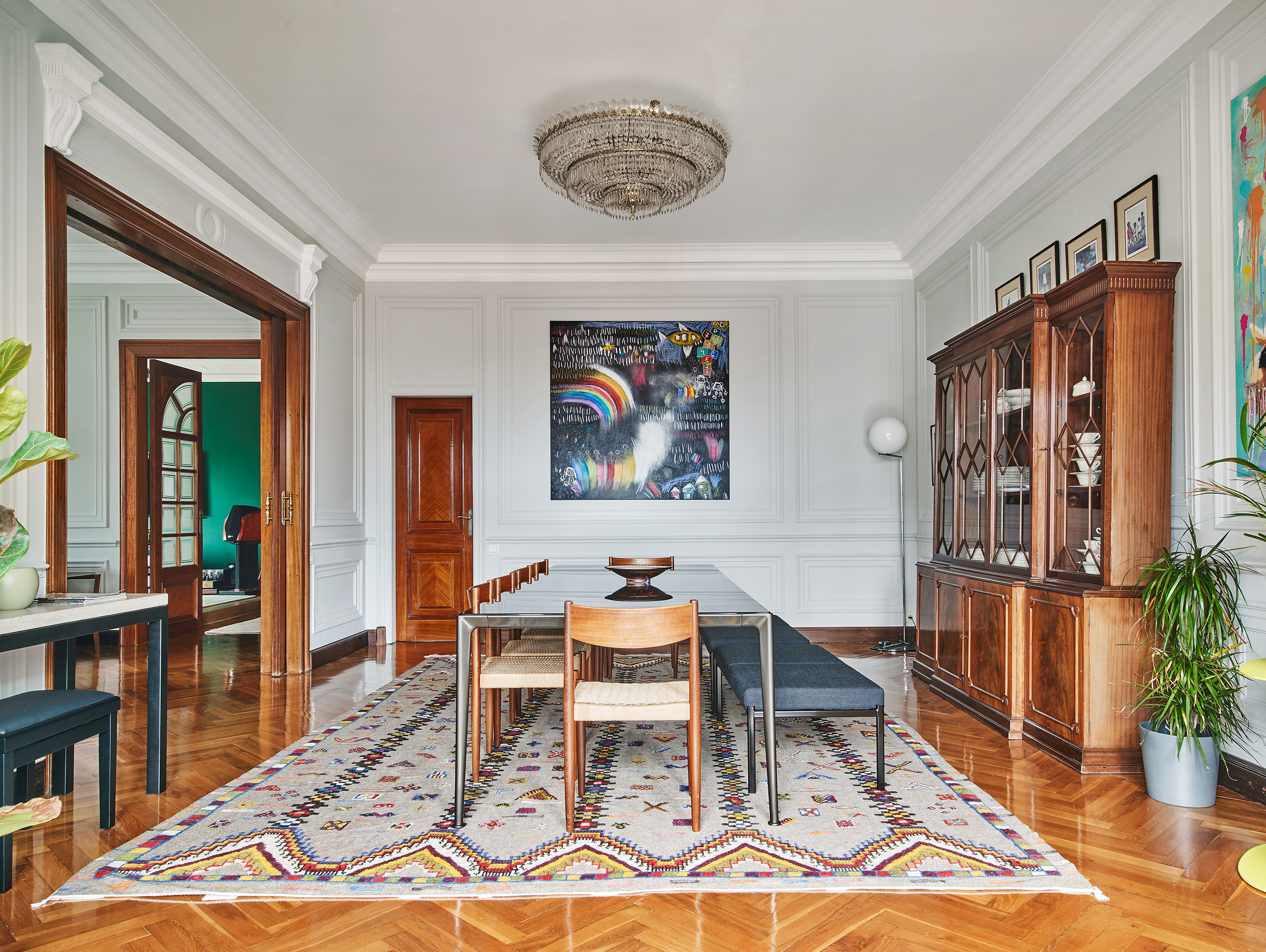
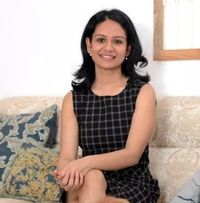
With Christmas just around the corner, you might feel trepidatious about the idea of a houseful of people, especially when it comes to sitting down for lunch. Your dining room is most likely designed to host a family dinner, yet if you've got lots of guests joining you for the holidays, you're probably wondering how to make the dining room more comfortable and spacious.
Dealing with less-than-ideal seating arrangements is a rite of passage during festive and holiday times, but it doesn't have to be so. In a perfect world, every guest would have about two feet of space to themselves at the dinner table, and with a few smart design tricks, you can make it happen.
From extendable dining tables, banquette seating, and oval and round tables to adding more seats to existing arrangements, we've got all bases covered. Take a look at these modern dining room ideas that show creative ways to make more space for people.

Aditi is a homes writer and editor with several years of experience. Her articles, backed by expert insights, offer suggestions aimed at helping readers make the best home design choices. For this article, she spoke to several designers to understand ways to add more seating to small dining rooms.
10 super clever ways to add extra seats to a dining room
1. Add a bench to increase seating

In your small dining room, if your table is angular enough, replacing chairs with benches makes it easier to squeeze an extra body in. The long, continuous seating allows you to fit more people on the table than you would with chairs, and in turn also creates an intimate setting, much like a picnic table. If you’re worried about back support, consider a high-backed, upholstered bench.
'In a smaller dining room, you need to be smarter with your space to fit in more guests, so instead of choosing larger, bulkier dining chairs, opt for dining benches as these often work best and can seat more people,' says Juliette Thomas, founder & director at Juliettes Interiors.
'Praised for their utilitarian function, benches have long been used in commercial settings but now, with priority for comfort, they have been welcomed into the home,' says Rachel Galbraith, creative director at Ercol. 'They’ve become increasingly popular as an alternative, or addition, to dining chairs. Upholstered benches encourage relaxed and sociable seating. The cushioning and fabric soften the lines of dining tables, while fewer legs create a lighter, airier feel.'
2. Or pair dining chairs with a sofa
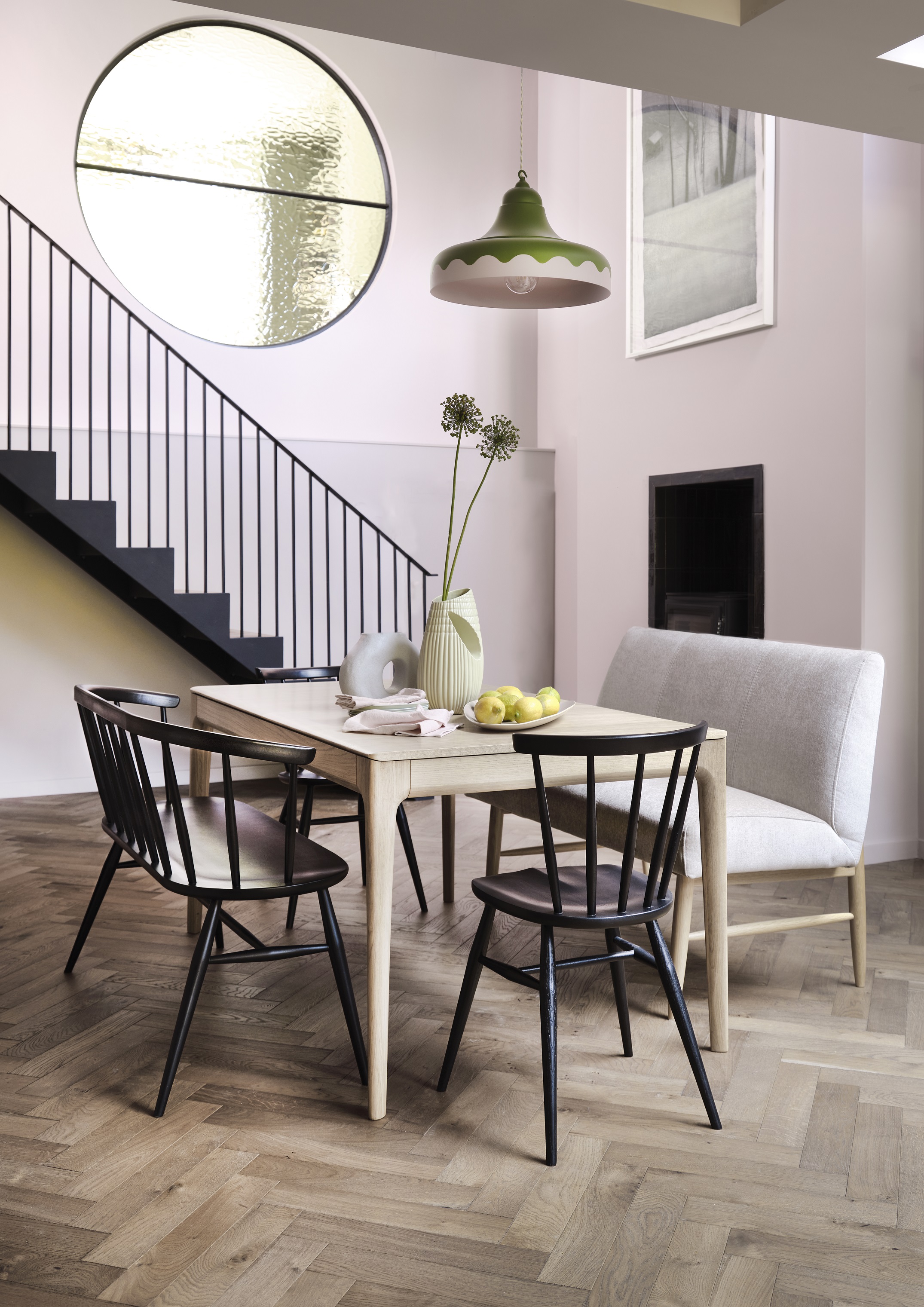
Another way to design a dining room is to look for the most comfortable seaters. While this may sound unconventional, a sofa positioned at the dining table isn't a bad idea at all. It will give the dining space a formal, sophisticated look and allow more than one person to be seated comfortably.
The Livingetc newsletters are your inside source for what’s shaping interiors now - and what’s next. Discover trend forecasts, smart style ideas, and curated shopping inspiration that brings design to life. Subscribe today and stay ahead of the curve.
'If you don’t have the space for a large family dining table or even an extendable table for special occasions, incorporating a dining bench or a sofa is a great way to squeeze a few more people at the table without the need for bulky chairs,' says Ann Marie Cousins, founder of AMC Design. 'These also sit seamlessly under any table, meaning they can be tucked away when not needed. Alternatively, combine your bench with a few chairs for some variety and to give you flexibility.'
3. Swap out your rectangular table for an oval one
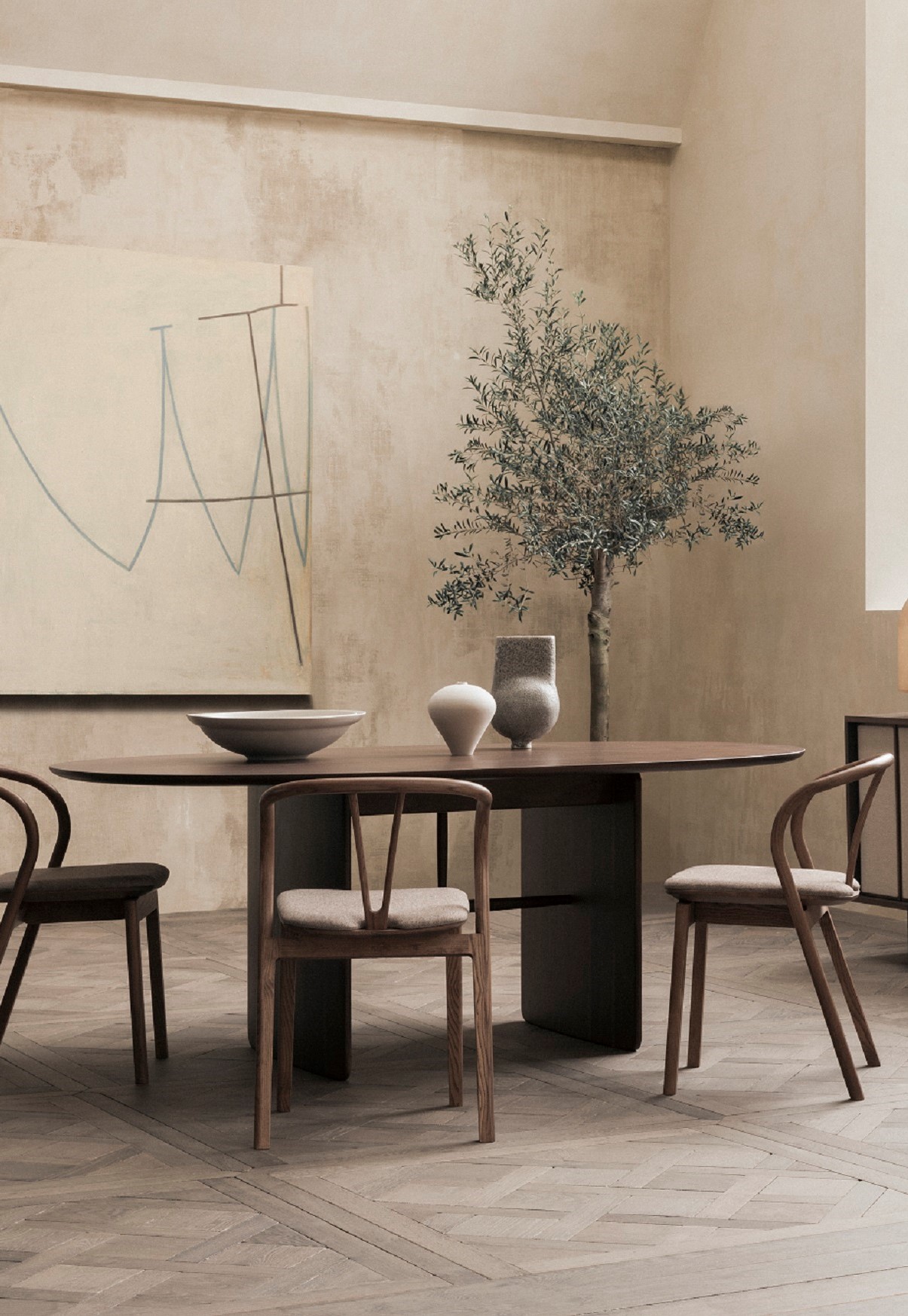
A big dining table trend at the moment is to...well, cut corners! Round, oval, or surfboard tables are the popular choices at the moment, that help create more space in the room. Getting rid of the hard edges of square or rectangular tables lets you fit more chairs around the table, and also creates more circulation space in the room to walk around. Consider narrow or armless chairs for these tables to further save space, and increase seating capacity.
'Surfboard dining tables are quite the rage right now,' says Brooklyn Brownstone designer Jarret Yoshida. 'Today, dining rooms aren't closed-off spaces anymore, and the need for pieces that make it easy to get around in the space are increasing. The rounded corners create less of a visual block. They also allow for comfortable end table positions which most rectangular dining tables do not allow.'
Limari Home Dining Table, Amazon
This beveled-edge round walnut table is ideal for a modern dining room due to its form. Plus it adds an earthy touch to the space with its materiality. The oval design allows more chairs to be accommodated within it.
4. Design in banquette seating
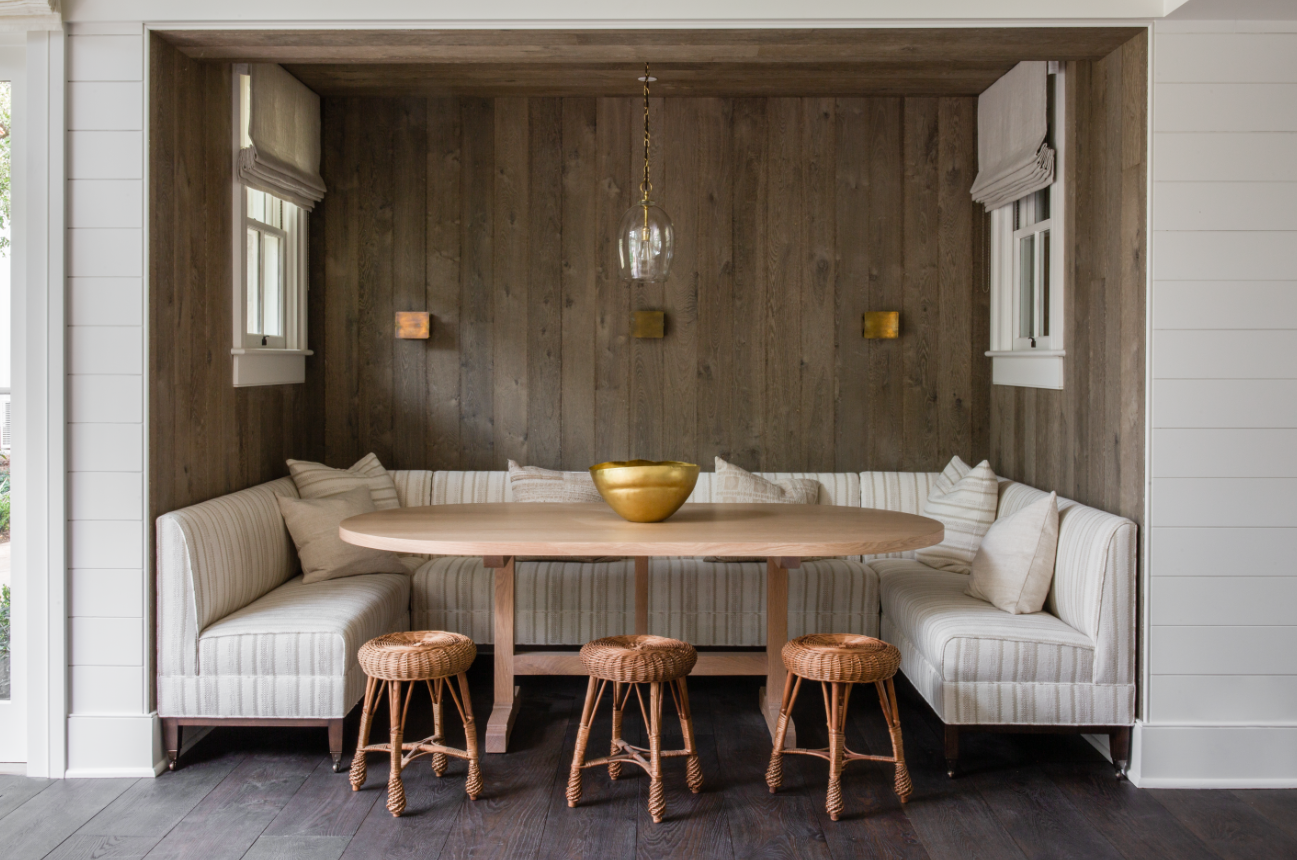
A booth style or banquette seating is making a comeback and for good reason. These are not only intimate seating corners but banquettes, pushed against a wall save floor space, and maximize the number of people you can host at once. The curving table design allows more chairs and stools to fit inside with chairs, and extra chairs can be placed outside of the table too, helping you maximize the space, so you aren’t relying entirely on the booth seating.
'This was a family room banquette that offered a casual dining space for our clients to share a meal with their family and friends,' says Marie Turner Carson, founder of M. Elle Design. 'The cozy seating allows for an intimate setting for up to ten people. The subtle stripe brings interest to the large banquette.'
5. Add an extendable dining table
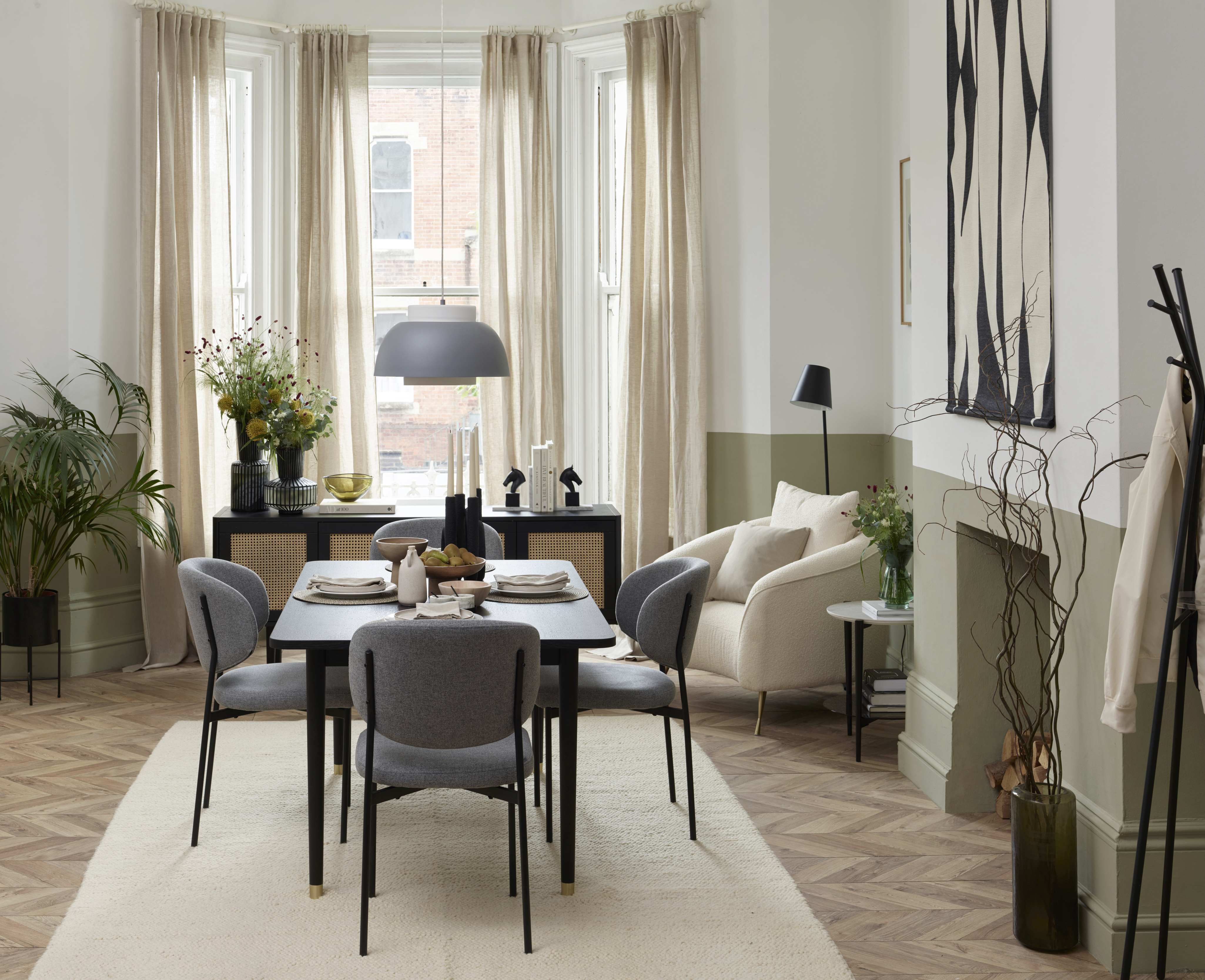
'When hosting in the dining room, the functionality of your furniture is as important as the design,' says Rob Ellis, head of design at Dwell. 'An extendable dining table idea allows you to utilize your dining room to its fullest, whilst also providing total flexibility if more guests turn up later and you need additional seating.'
'As it is the largest piece of furniture in the room, picking the right table is essential for your space to work for you, so choose a design that is of high-quality and versatile so it stands the test of time and can be easily moved when needed,' says Juliette.
6. Bring in a sideboard or console to ensure the dining table is clear

The dining room buffet is one of the most practical and functional additions. Whether built-in or freestanding, these are useful for storing china, food, or even holding plates and glasses while people dine. Especially useful if you have a living room dining room combo, it ensures the room remains clutter-free and all the miscellaneous 'stuff' your room collects can go inside it.
'When hosting for a large group, you will likely need additional space which is easily accessible to the table, so incorporate a sideboard into your scheme, pushed back away from the table to leave more room for seating, whilst giving extra storage for hosting,' says Rob.
'Opt for a similar material or style for a cohesive final look,' says Rob. 'A dining area essential, it can store anything from dinnerware and glasses to candles and decanters – both inside and on top. Create a focal point by using it as a bar throughout the evening and decorate it with plants and personal possessions.'
Costway Bar Cabinet Sideboard, Target
With its clean lines and smart design, this storage cabinet perfectly blends with a home of any style and adds functionality to the dining or kitchen.
7. Choose stools instead of chairs
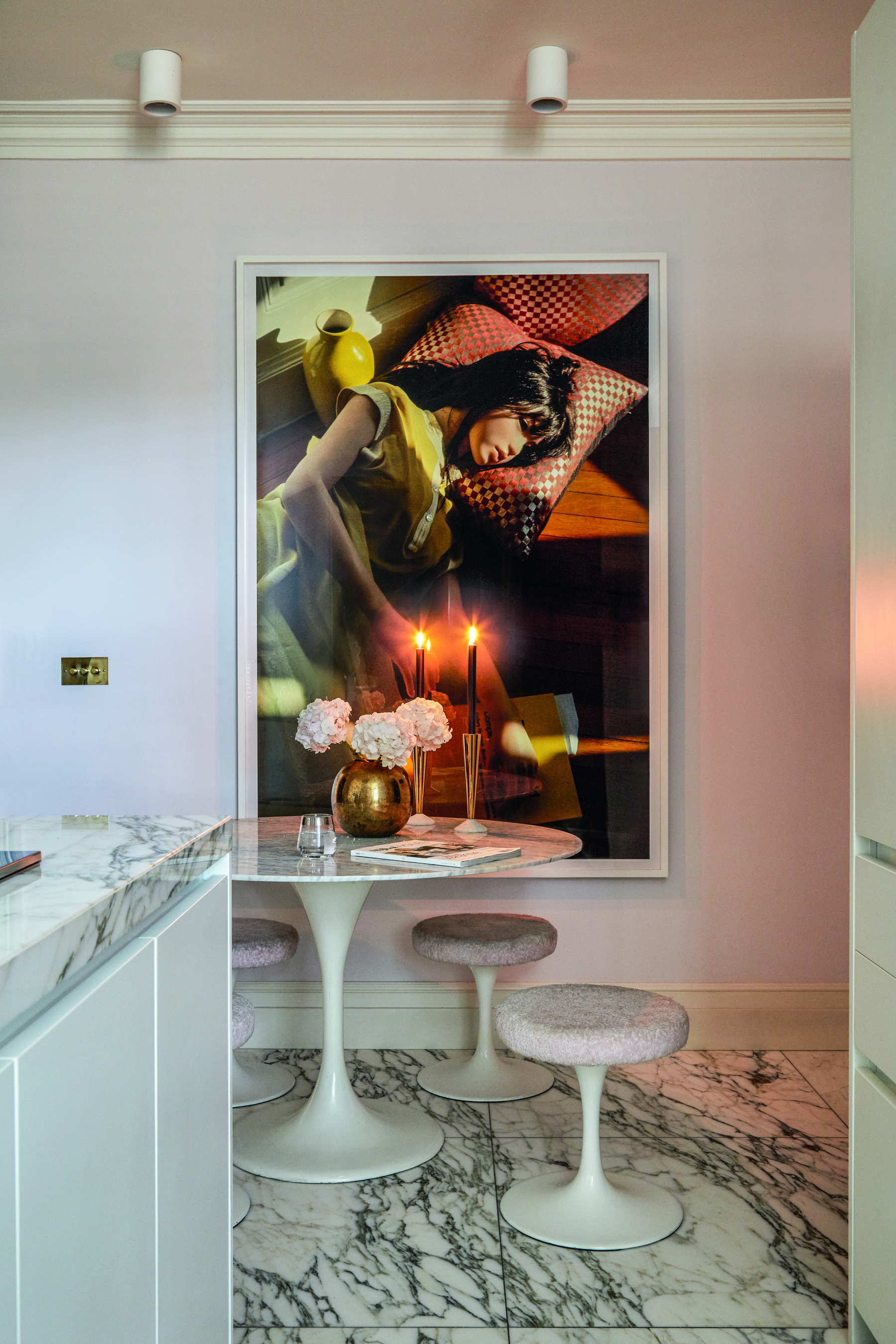
No matter how much you may like your large, ornate, designer chairs, the fact is that in a small dining room, they will take up a lot of square footage and block movement. Plus, they can make it hard to squeeze in more guests. One easy solution is to opt for dining stools that can be completely stowed away, underneath your table.
This may not be the best option when it comes to back support and ultimate comfort but if you need to keep your walkways clear, and are okay with temporary changes to your dining room during festive times or when you're hosting a large gathering, then this is one of the best ways to do it.
Choose stools in pop colors that match the room's paint or dining room wallpaper. This will give the room a stylish look, and a nice pick-me-up.
8. Mix and match chairs
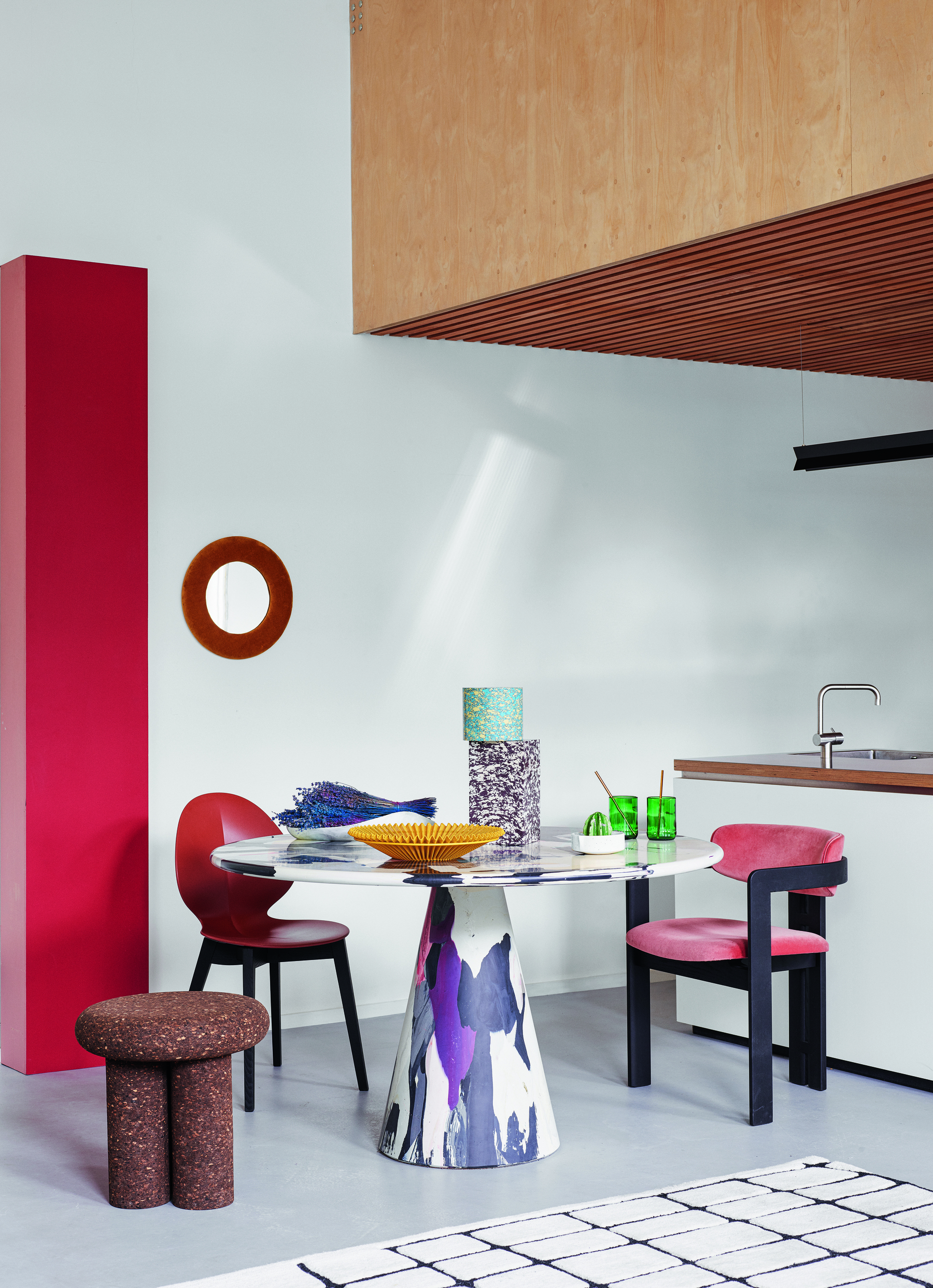
So if you love to entertain, don’t let your small apartment dining room hold you back. To add more seats, you don't need to go shopping for matching chairs and stools. You just need to shop smart and plan for the guests you want to have. There's no harm in mixing and matching chairs and stools, for an eclectic setup.
Just ensure that your room doesn't become too cluttered with the various seaters.
'With regards to seating, only keep the chairs you use on a day-to-day basis with your dining table, and store the others,' says Juliette. 'Keeping your excess dining chairs with your table can often make the room feel smaller and cluttered, so store them in other rooms such as a study or bedroom, or away in the loft if you only need them a few times a year.'
9. Place the dining table next to secondary informal seating
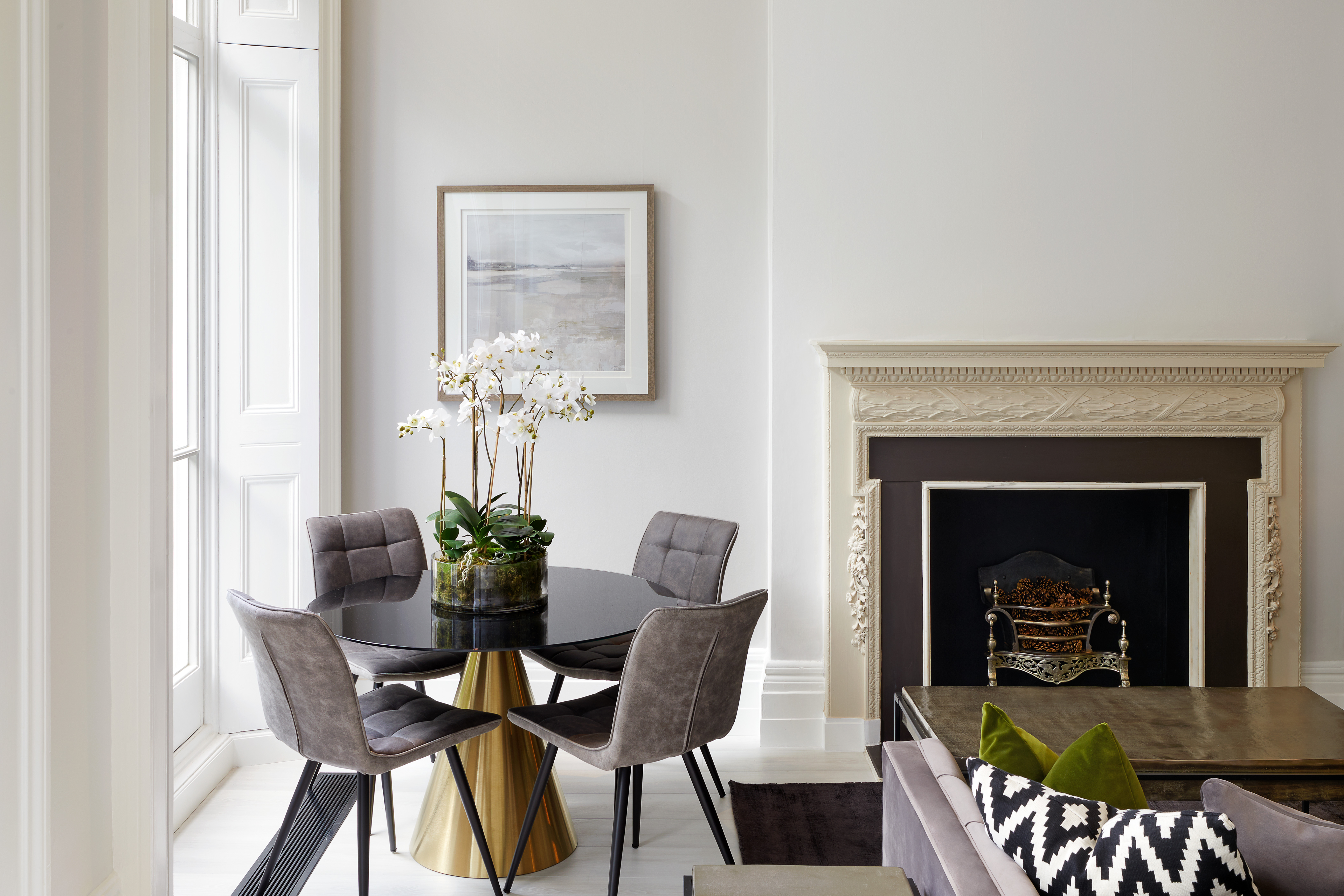
Consider placing the dining table close to the living room seating in an open concept space, so you can take in the second seating space for large dinners and brunches. Choose a round table, and push the dining in a corner.
Make sure your dining chairs and table align with the style of the living room, so both spaces blend in together, and look like one, large seamless room.
10. Use the island as an extra seating space
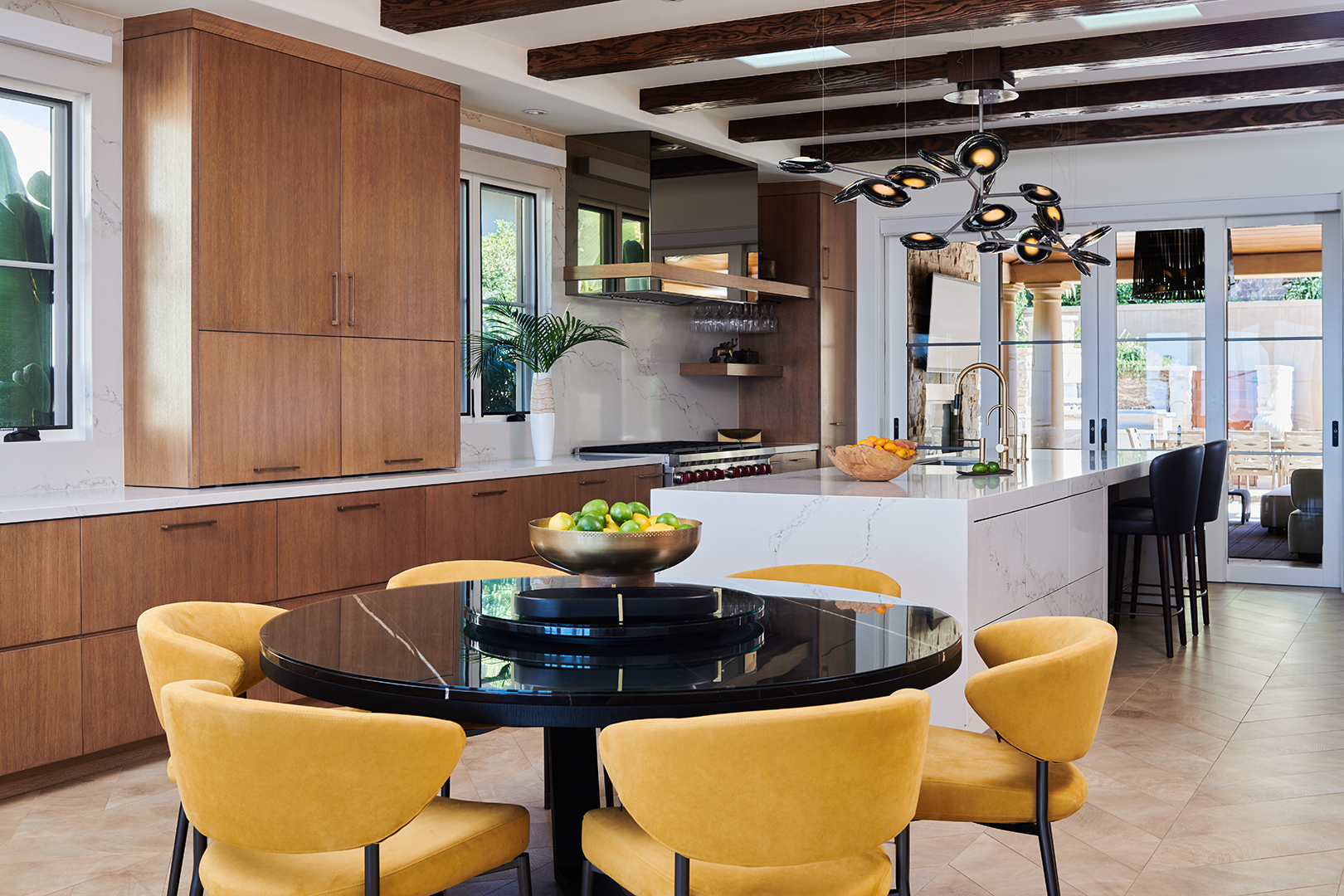
A great kitchen dining idea is to use the dining table and the kitchen island as one large space for meals. Utilize the island counter space for snacks, or drinks, while the dining table can be used for the main course.
Choose flexible seating so the chairs and stools can be moved around in the area, and used where needed. Consider island seating that can be tucked inside so it doesn't come in the way of movement.

Aditi Sharma Maheshwari started her career at The Address (The Times of India), a tabloid on interiors and art. She wrote profiles of Indian artists, designers, and architects, and covered inspiring houses and commercial properties. After four years, she moved to ELLE DECOR as a senior features writer, where she contributed to the magazine and website, and also worked alongside the events team on India Design ID — the brand’s 10-day, annual design show. She wrote across topics: from designer interviews, and house tours, to new product launches, shopping pages, and reviews. After three years, she was hired as the senior editor at Houzz. The website content focused on practical advice on decorating the home and making design feel more approachable. She created fresh series on budget buys, design hacks, and DIYs, all backed with expert advice. Equipped with sizable knowledge of the industry and with a good network, she moved to Architectural Digest (Conde Nast) as the digital editor. The publication's focus was on high-end design, and her content highlighted A-listers, starchitects, and high-concept products, all customized for an audience that loves and invests in luxury. After a two-year stint, she moved to the UK and was hired at Livingetc as a design editor. She now freelances for a variety of interiors publications.

